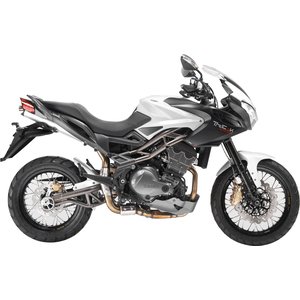Benelli Tre K 1130 (2006–2017): A Sport Tourer with an Italian Soul
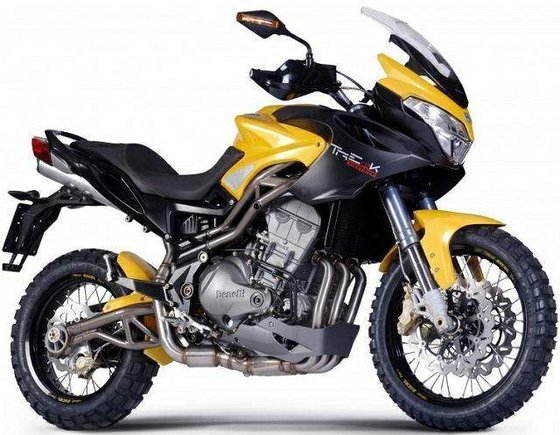
For over a decade, the Benelli Tre K 1130 carved its niche as a bold, unconventional sport-touring motorcycle that blended Italian flair with a rowdy inline-three engine. Whether navigating twisty coastal roads, devouring highway miles, or even tackling light off-road adventures in its Amazonas trim, this bike dared to stand out in a crowd dominated by Japanese and German rivals. After a day in the saddle of a well-maintained 2015 Tre K 1130, one thing became clear: This is a motorcycle that prioritizes emotion over perfection—and that’s precisely its charm.
Design & Build: Unmistakably Italian, Unapologetically Bold
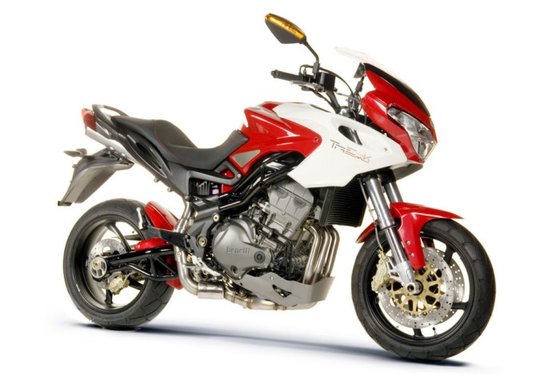
The Tre K 1130’s design language screams "Italian rebellion." Its decomposable frame—a steel trestle front married to an aluminum rear casting—is as much a stylistic statement as a structural one. The exposed trellis work, minimalist bodywork, and under-seat exhaust (on earlier models) give it a mechanical rawness missing from sanitized modern bikes.
Standout Features:
- Aggressive Stance: The 50mm Marzocchi upside-down forks and wide handlebars command attention, while the Amazonas variant adds spoked wheels and a taller stance for off-road flair.
- Color Schemes: From military green to anthracite grey, Benelli avoided subtlety. The 2015 model’s grey/silver combo looks stealthy yet sophisticated.
- Ergonomic Quirks: The adjustable windscreen (manually via knobs) feels flimsy at highway speeds, and the seat, while stylish, thins out after 90 minutes.
Engine & Performance: The Heart of a Lion
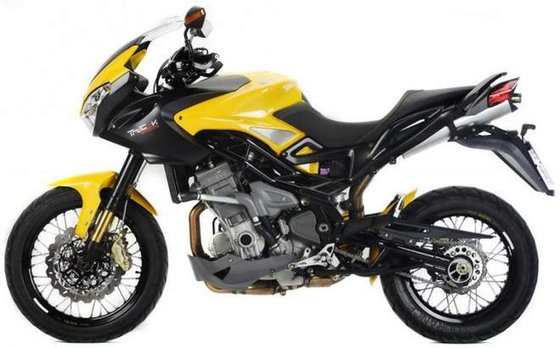
The 1131cc inline-three is the star here. With 125 HP @ 9,000 RPM and 112 Nm (82.6 lb-ft) @ 5,000 RPM, it’s a torque-rich engine that pulls like a freight train from 3,000 RPM.
Key Impressions:
- Soundtrack: The triple’s growl evolves from a bass-heavy burble at low revs to a metallic snarl near redline—a symphony for riders tired of sterile parallel-twins.
- Power Delivery: Unlike peaky four-cylinders, the Tre K’s midrange shove lets you short-shift and surf the torque wave. Engage the "Power Control" map (post-2010 models), and throttle response sharpens for aggressive riding.
- Vibration: A balancer shaft reduces buzz, but between 4,000–5,000 RPM, the bars and pegs hum noticeably—a small price for mechanical character.
Fuel Efficiency: Averaging 5.6 L/100 km (42 MPG), the 22L tank offers 350–400 km (217–248 mi) range—ideal for long hauls.
Handling & Ride Experience: Confidence Meets Chaos
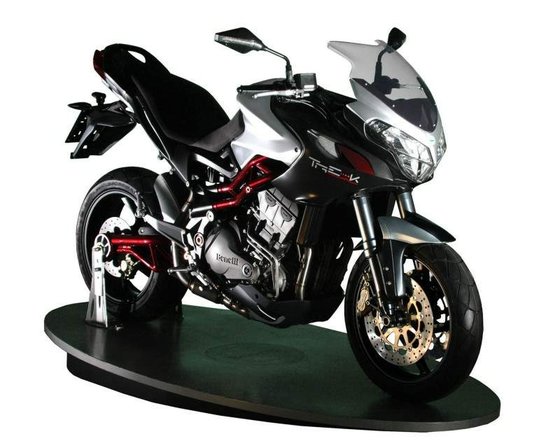
Benelli’s chassis philosophy leans toward "controlled aggression." The steel/aluminum frame and 25° rake strike a balance between stability and agility.
On the Road:
- Twisties: The wide bars provide leverage for quick direction changes. The 190/55-ZR17 rear tire (180 on Amazonas) offers ample grip, though heavy braking dives the front noticeably.
- Highways: At 140 km/h (87 mph), the bike feels planted, but crosswinds buffet the tall rider.
- Off-Road (Amazonas): The 19” front wheel and 150mm suspension travel handle gravel roads competently, but this isn’t a true ADV—save the single-piston rear brake for pavement.
Braking: Dual 320mm front discs with 4-piston calipers deliver strong stopping power, though ABS is absent even on later models.
Comfort & Ergonomics: Touring, But Make It Sporty
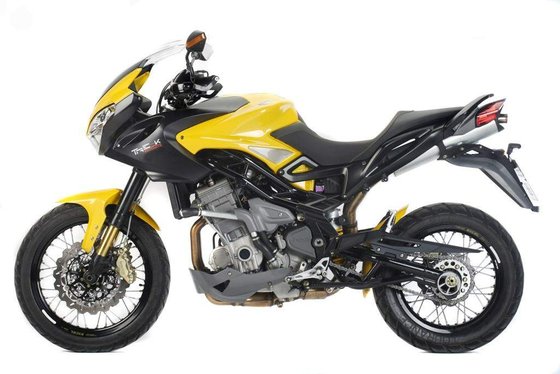
The riding position is upright but sporty—a middle ground between the BMW S1000XR and Ducati Multistrada.
For the Rider:
- Seat Height: Ranges from 780 mm (30.7") on lower-spec models to 850 mm (33.5") on the Amazonas. Shorter riders tip-toe.
- Wind Protection: The adjustable screen (3 positions) reduces chest pressure but creates helmet buffeting above 110 km/h (68 mph).
- Passenger Comfort: The pillion seat is thinly padded—fine for short trips, but your partner will demand stops after an hour.
Competition: Where the Tre K 1130 Stands Out
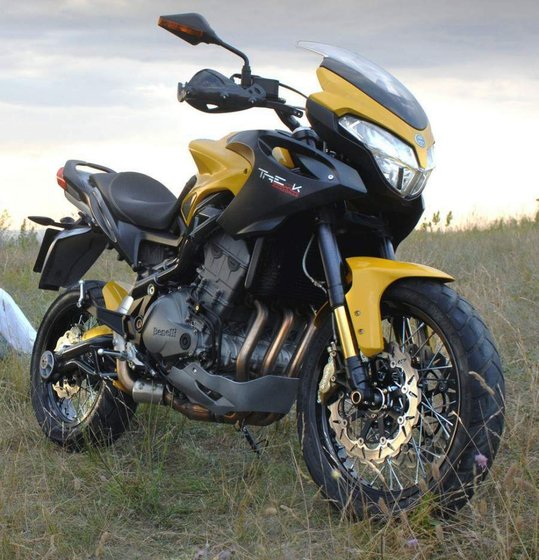
In the 2010s sport-touring segment, the Benelli faced stiff rivals:
| Model | Pros | Cons vs. Tre K 1130 |
|--------------------|---------------------------------------|---------------------------------------|
| Triumph Tiger 1050 | Smoother engine, better dealer network | Less character, heavier feel |
| Ducati Multistrada 1100 | Lighter, sharper handling | Higher maintenance costs, less torque |
| Yamaha TDM 900 | Cheaper, ultra-reliable | Dated design, underwhelming power |
Benelli’s Edge:
- Exclusivity: You won’t see another at the café.
- Engine Personality: The triple’s combination of low-end grunt and top-end zest outshines twins and fours.
- Customization: The trellis frame and minimalist bodywork make aftermarket mods a breeze.
Maintenance: Keeping the Italian Flame Alive
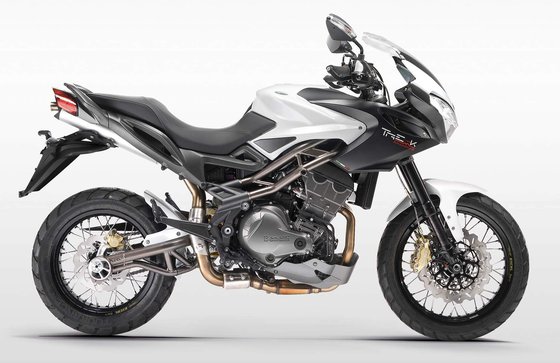
Owning a Tre K 1130 isn’t for the neglectful. Key considerations:
Common Needs:
- Chain & Sprockets: The 530 chain wears faster if not lubricated every 500 km (310 mi). Upgrade to an X-ring chain for longevity.
- Valve Adjustments: Every 12,000 km (7,456 mi). Shim-under-bucket design requires patience—not a DIY job for novices.
- Cooling System: Flush coolant every 2 years. Watch for leaks around the radiator hoses (2006–09 models).
Upgrade Recommendations:
- Suspension: Later models have adjustable forks, but a Wilbers or Öhlins shock transforms the ride.
- Brakes: Swap pads for EBC HH sintered for better bite.
- Exhaust: The stock system is heavy. A slip-on like Arrow or SC Project sheds weight and amplifies the triple’s roar.
Pro Tip: Always use 10W-50 full synthetic oil (e.g., Motul 7100) to protect the high-revving engine.
Final Verdict: Love It or Leave It
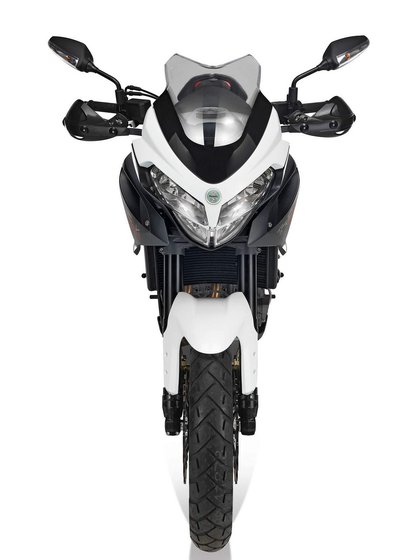
The Benelli Tre K 1130 isn’t the most refined, reliable, or practical sport-tourer. But for riders craving a machine with soul, it’s a masterpiece. Its flaws—the vibrations, the absent ABS, the quirky ergonomics—become endearing quirks over time.
Who Should Buy One?
- Enthusiasts tired of sanitized modern bikes.
- Taller riders wanting a commanding riding position.
- DIYers who enjoy personalizing their machine.
Who Should Avoid?
- Commuters prioritizing fuel efficiency.
- Tourists needing luggage capacity (without aftermarket panniers).
- Perfectionists who despise occasional Italian idiosyncrasies.
In a world of increasingly homogeneous motorcycles, the Tre K 1130 remains a thrilling reminder of why we ride: for passion, not pragmatism.
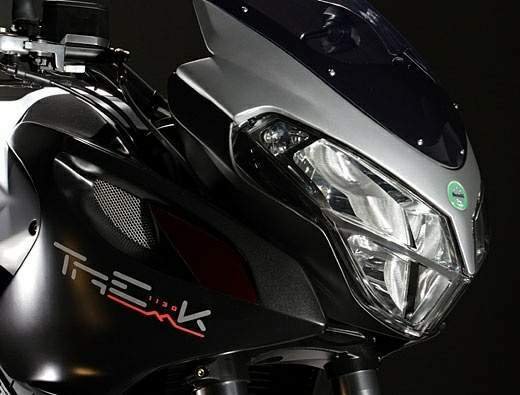
The Benelli Tre K 1130: Because the road less traveled deserves a soundtrack.








Specifications sheet
| Engine | |
|---|---|
| Stroke: | Four-stroke |
| Max power: | 92 kW | 123.0 hp |
| Max torque: | 112 Nm |
| Fuel system: | Electronic fuel injection with 53mm throttle bodies |
| Max power @: | 9000 rpm |
| Spark plugs: | NGK CR9E |
| Displacement: | 1131 ccm |
| Max torque @: | 5000 rpm |
| Bore x stroke: | 88.0 x 62.0 mm |
| Configuration: | Inline |
| Cooling system: | Liquid |
| Compression ratio: | 11.6:1 |
| Number of cylinders: | 3 |
| Valves per cylinder: | 4 |
| Dimensions | |
|---|---|
| Wheelbase: | 1515 mm (59.6 in) |
| Dry weight: | 215 |
| Wet weight: | 240 |
| Seat height: | 780–850 mm (30.7–33.5 in) adjustable |
| Overall width: | 850 mm (33.5 in) |
| Overall height: | 1320 mm (51.9 in) |
| Overall length: | 2183 mm (85.9 in) |
| Ground clearance: | 170 mm (6.7 in) |
| Fuel tank capacity: | 22 L (5.8 US gal) |
| Drivetrain | |
|---|---|
| Final drive: | chain |
| Gear ratios: | ['1st 14/39', '2nd 18/35', '3rd 21/32', '4th 23/30', '5th 24/28', '6th 26/27'] |
| Transmission: | 6-speed, wet multiplate clutch |
| Rear sprocket: | 37 |
| Front sprocket: | 16 |
| Maintenance | |
|---|---|
| Rear tire: | 180/55-z-17 |
| Engine oil: | 10W50 |
| Front tire: | 120/70-z-17 |
| Brake fluid: | DOT 4 |
| Coolant capacity: | Water + coolant mix (exact volume unspecified) |
| Engine oil capacity: | 3.5 |
| Engine oil change interval: | Every 5000 km or 2 years |
| Valve clearance (intake, cold): | 0.10–0.20 mm |
| Valve clearance check interval: | 24,000 km (15,000 mi) |
| Valve clearance (exhaust, cold): | 0.20–0.30 mm |
| Recommended tire pressure (rear): | 2.4 bar (35 psi) |
| Recommended tire pressure (front): | 2.3 bar (33 psi) |
| Additional Notes | |
|---|---|
| Amazonas variant specifics: | {'Rear tire': '150/70-ZR17', 'Front tire': '110/80-ZR19', 'Ground clearance': '170 mm (6.7 in)', 'Rear wheel travel': '180 mm (7.1 in)', 'Front wheel travel': '180 mm (7.1 in)'} |
| Chassis and Suspension | |
|---|---|
| Frame: | Decomposable steel trestle front with aluminum alloy rear casting |
| Rear brakes: | Single 240mm disc with 2-piston caliper |
| Front brakes: | Dual 320mm discs with 4-piston Brembo calipers (ABS on some models) |
| Rear suspension: | Steel swingarm with Extreme Technology monoshock, adjustable rebound and preload |
| Front suspension: | 50mm Marzocchi upside-down fork, adjustable rebound/compression and preload |
| Rear wheel travel: | 144 mm (5.7 in) |
| Front wheel travel: | 150 mm (5.9 in) |



